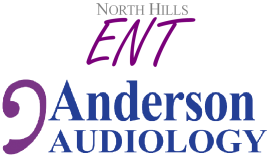Stuttering is defined as disruptions of speech sounds or “disfluencies” that affects the fluency of conversational speech. This typically begins in childhood but can last for a lifetime depending on familial history, age of onset, and severity.
There is no, one cause of stuttering; rather, a combination of four factors are considered the cause. These factors include genetics (according to the National Stuttering Foundation website, approximately 60% of people who stutter [PWS] also have a family member that does so), child development (developmental delays or sound production disorders), neurophysiology (recent studies have demonstrated that PWS process language differently than those who are typically fluent), and environmental factors (family dynamics).
According to the American Speech and Hearing Association, stuttering includes repetitions of whole words, part words, and speech sounds that occur more in persons who stutter (PWS) than others. Other behaviors include speech being stopped or “blocked” with an open mouth posture with little to no speech coming out as well as sounds in words being prolonged. Some examples include:
| · Sound Repetition | o “t-t-t-t-t-t-to the store” |
| · Part-Word Repetition | o “ma-ma-ma-ma-make it go” |
| · Whole-Word Repetition | o “my-my-my-my dog is big” |
| · Block | o “____________THE cookie is mine” |
| · Prolongation | o “sssssssss-it next to me” |
| · Interjection | o “I, um-um-um like um-um ponies” |
Typical disfluencies include whole-word repetitions (“the the ball is red”) or part-word repetitions that occur once or twice (“li-li-like my dress?”); typical disfluencies can also include interjections and filler words. These disfluencies typically occur between 1.5 and 5 years and have a tendency to ebb and flow in a child’s speech. This is thought to be due to large language gains that occur sporadically throughout a child’s development w hich cause difficulty with organization of vocabulary and associated categories or attributes, as well as word-finding difficulties.
Children who are thought to exhibit a mild stutter will repeat sounds more than twice and will have tension or “struggles” that are visible in their face and body. Additionally, some children exhibit a pitch rise during stuttered moments as well as “prolongations” (“mmmmmmmmmmmmm-y mommy makes sandwichessssssssss”) and “blocks” (“____________THE puppy is big”.
Severe stuttering is characterized by the examples provided above in addition to physical characteristics. These include obvious tension in the face and mouth (facial contortions), shoulders and neck as well as physical movements (head bobbing, hand movements, leg movements, table tapping, etc.). Additionally, prolongations and blocks noted in PWS’s speech are noted to be longer and increasingly severe in nature.
Treatment is dependent on a child’s age, awareness of the disfluencies, as well as additional concomitant diagnoses. Most treatment centers on changing the patient’s behaviors to improve communication; for example, making sentences shorter and less complex as well as slowing the rate of speech by using a reduced speed or pausing/chunking their words between slow and easy breaths. Additionally, strategies and techniques can be taught to older children to improve their speech during and prior to a stuttering moment.
Source: (Stuttering. (n.d.). Retrieved October 20, 2015, from http://www.asha.org/public/speech/disorders/stuttering.htm), (If You Think Your Child Is Stuttering… (n.d.). Retrieved October 20, 2015, from http://www.stutteringhelp.org/if-you-think-your-child-stuttering)
—
North Hills ENT and Anderson Audiology have several convenient locations for Speech Therapy!
North Hills ENT – 817-595-3700
4351 Booth Calloway Road, Ste. 308
North Richland Hills, TX 76180
North Hills ENT– 817-595-3700
647 S. Great Southwest Pkwy., Ste. 103
Grand Prairie, TX 75051
Anderson Audiology – 817-282-8402
1550 Norwood Drive, Suite 100
Hurst, TX 76054

